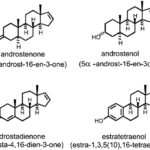Alanine transaminase (ALT) is a crucial enzyme primarily found in the liver. When you get a blood test, particularly a liver panel or comprehensive metabolic panel, ALT levels are often measured. But what is ALT in a blood test, and why is it important? Understanding ALT can provide valuable insights into your liver health and overall well-being.
ALT, along with other liver enzymes, plays a vital role in helping the liver function properly. Its main job is to help convert alanine into pyruvate in the process of producing energy for liver cells. Small amounts of ALT are normally present in the bloodstream. However, when the liver is damaged, it releases more ALT into the blood, causing levels to rise. This elevation serves as an indicator of potential liver injury or disease.
Why is ALT Measured in a Blood Test?
Measuring ALT is a routine part of assessing liver health. Doctors order ALT tests for various reasons, primarily to:
- Screen for Liver Disease: As elevated ALT levels are often the first sign of liver problems, the test is used as a screening tool for conditions like hepatitis, non-alcoholic fatty liver disease (NAFLD), and cirrhosis.
- Monitor Liver Damage: For individuals already diagnosed with liver conditions, regular ALT testing helps monitor the progression of the disease and the effectiveness of treatments.
- Assess Medication Side Effects: Certain medications can be toxic to the liver. ALT tests are used to monitor liver function in patients taking these drugs.
- Investigate Symptoms: If you experience symptoms like jaundice (yellowing of skin and eyes), abdominal pain, nausea, or fatigue, an ALT test can help determine if liver issues are the cause.
High ALT levels don’t always mean serious liver disease, but they always warrant further investigation to determine the underlying cause.
What are Normal and High ALT Levels?
The normal range for ALT can vary slightly depending on the laboratory and the testing method used. However, generally, the normal range for ALT is between 7 to 55 units per liter (U/L).
It’s important to note that “normal” ranges can also be influenced by factors like age and sex. Always discuss your specific results with your doctor for accurate interpretation.
High ALT levels are generally considered to be above 55 U/L, but the degree of elevation and the context of your overall health are crucial. Mildly elevated ALT levels might not be as concerning as significantly high levels.
Common Causes of Elevated ALT Levels
Many factors can lead to elevated ALT levels. Some of the most common causes include:
- Non-alcoholic Fatty Liver Disease (NAFLD): This is one of the most frequent causes of elevated ALT, especially in individuals with obesity, type 2 diabetes, and high cholesterol. NAFLD involves the accumulation of excess fat in the liver, leading to inflammation and liver damage.
- Alcohol-related Liver Disease: Excessive alcohol consumption can cause liver inflammation and damage, resulting in elevated ALT.
- Viral Hepatitis: Hepatitis viruses (A, B, and C) are a major cause of liver inflammation and can significantly raise ALT levels.
- Medications: Many prescription and over-the-counter drugs, including pain relievers like acetaminophen and certain antibiotics, can cause drug-induced liver injury and elevate ALT.
- Herbal Supplements: Some herbal supplements can also be toxic to the liver and lead to increased ALT.
- Hemochromatosis: This genetic condition causes the body to absorb too much iron, which can accumulate in the liver and cause damage.
- Autoimmune Hepatitis: This is a condition where the body’s immune system attacks the liver cells, leading to inflammation and elevated ALT.
- Celiac Disease: This autoimmune disorder triggered by gluten can sometimes affect the liver and cause mild ALT elevation.
- Muscle Injury: While ALT is primarily a liver enzyme, muscle damage can also release small amounts of ALT into the bloodstream, potentially causing a mild increase.
Addressing Elevated ALT Levels
If your blood test reveals high ALT levels, the next step is to work with your doctor to determine the underlying cause. This may involve further blood tests, imaging studies like ultrasound or MRI, or even a liver biopsy in some cases.
While medical treatment will depend on the specific diagnosis, lifestyle modifications can often play a supportive role in managing and potentially lowering ALT levels, particularly in conditions like NAFLD. These modifications may include:
- Dietary Changes: Adopting a healthy diet low in saturated and trans fats, refined sugars, and processed foods can benefit liver health. Focus on fruits, vegetables, whole grains, and lean proteins.
- Weight Management: If you are overweight or obese, losing even a modest amount of weight can significantly improve liver health and reduce ALT levels, especially in NAFLD.
- Regular Exercise: Physical activity can help reduce liver fat and improve overall liver function.
- Coffee Consumption: Some studies suggest that moderate coffee consumption may have protective effects on the liver and help lower liver enzymes.
- Folate Intake: Ensuring adequate folate intake through diet or supplements might also be beneficial for liver health.
- Limit Alcohol: If alcohol is a contributing factor, reducing or eliminating alcohol consumption is crucial.
It’s essential to remember that this information is for educational purposes and should not be considered medical advice. Always consult with your healthcare provider for diagnosis and treatment of elevated ALT levels. They can provide personalized guidance based on your individual health status and test results.

